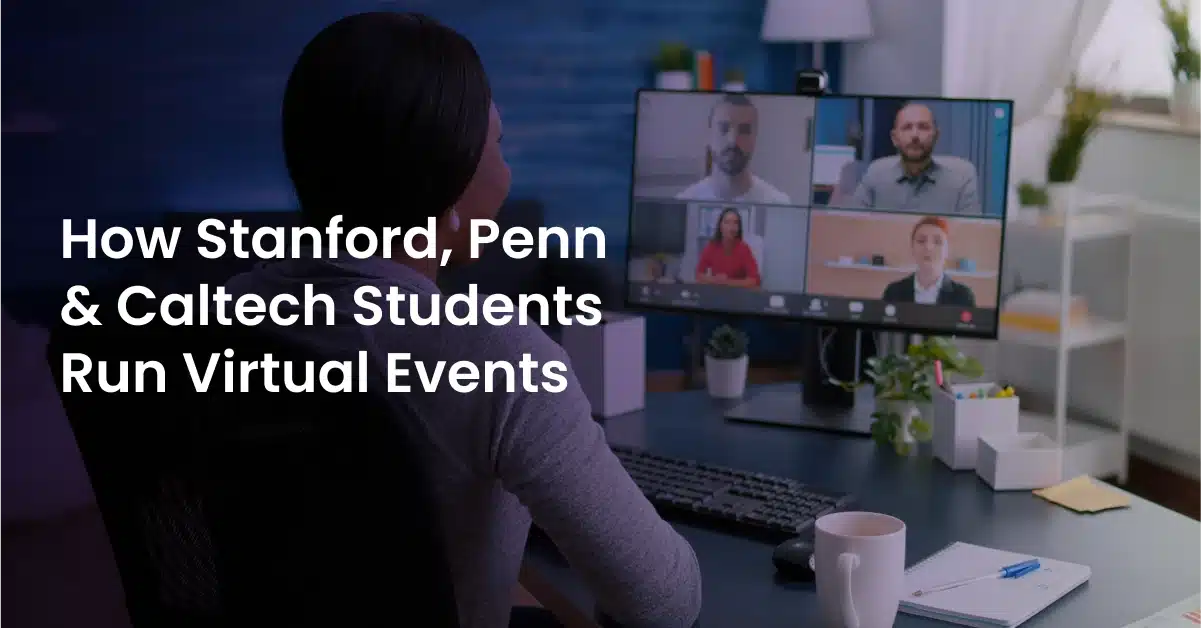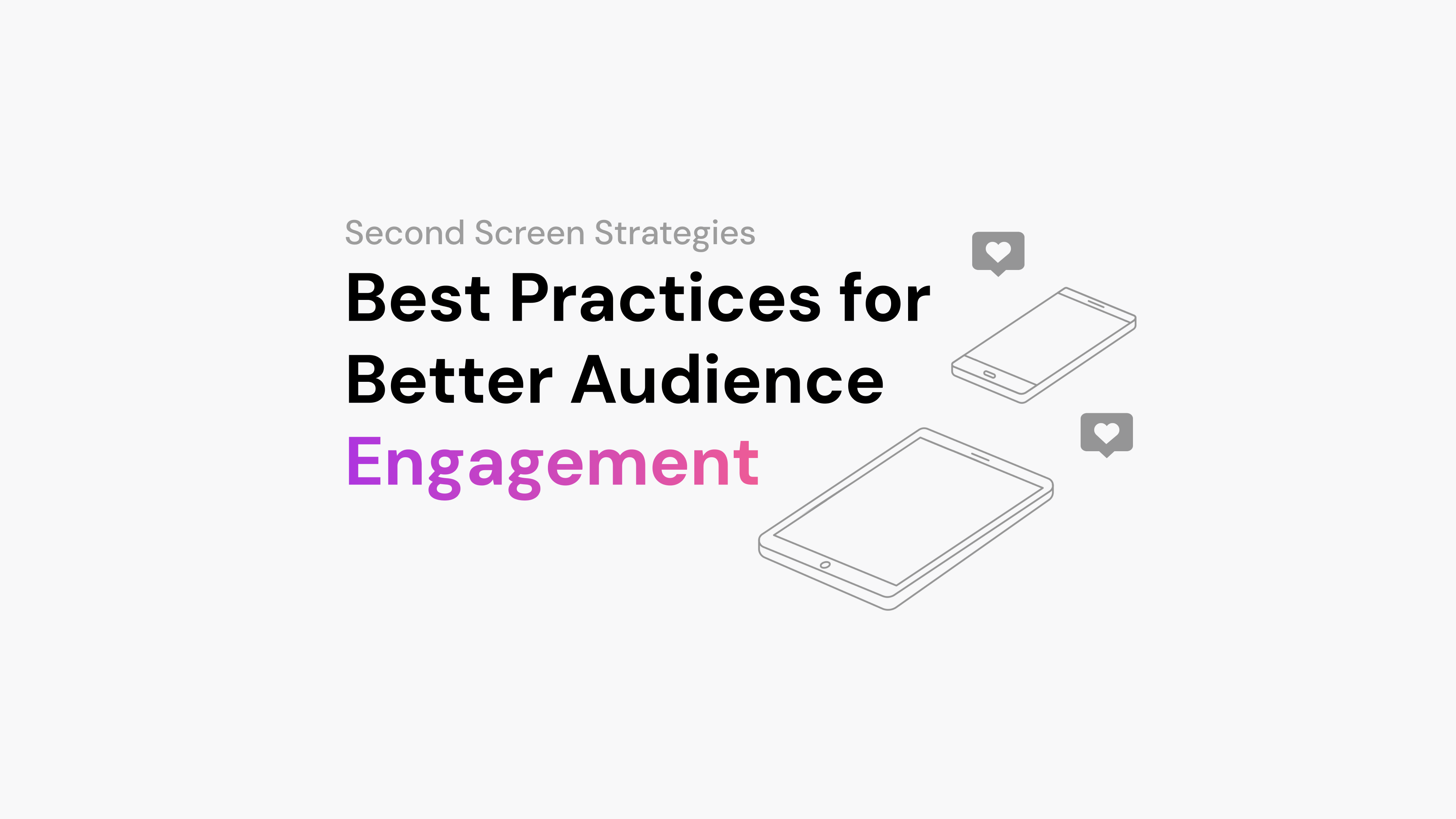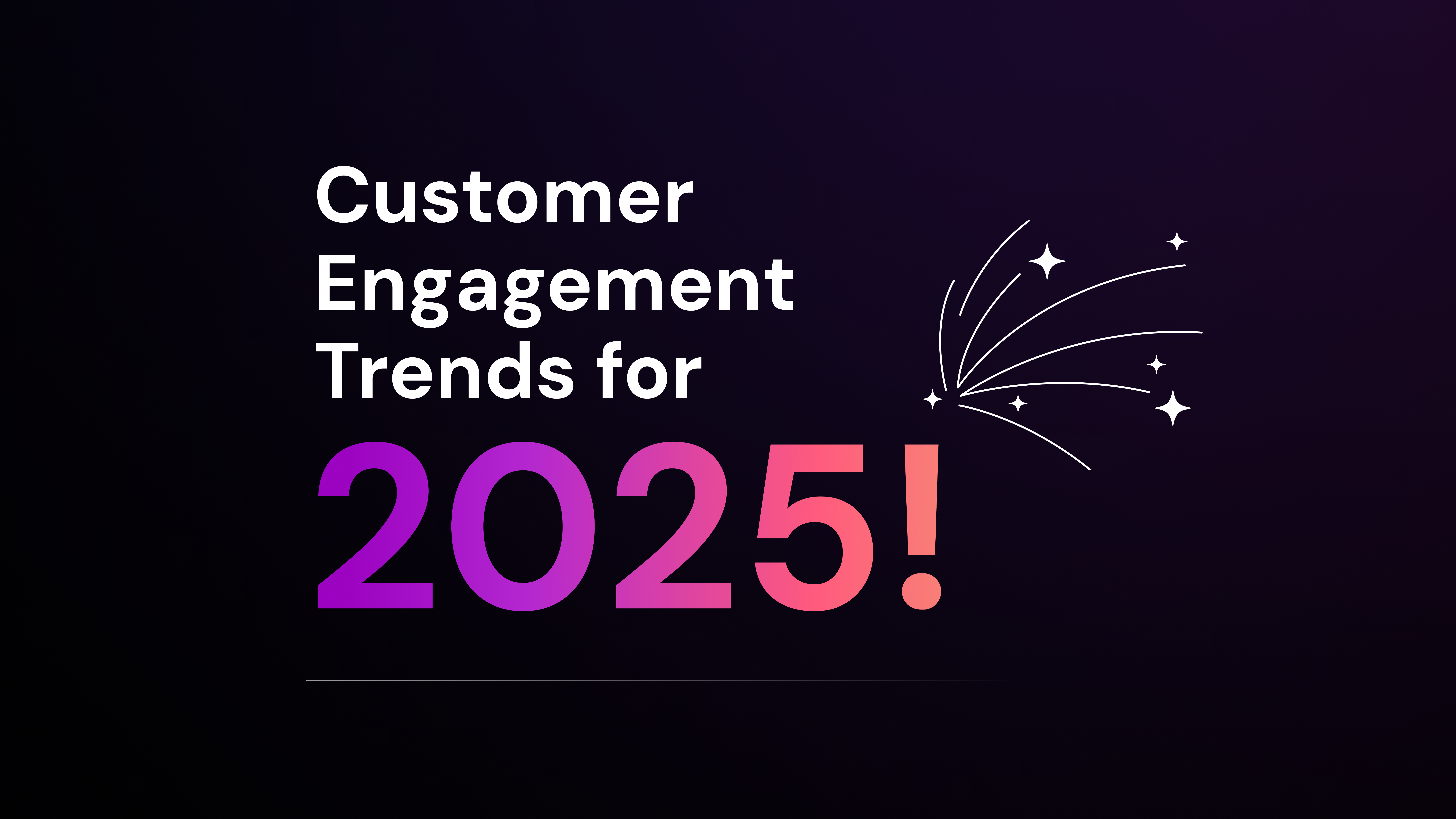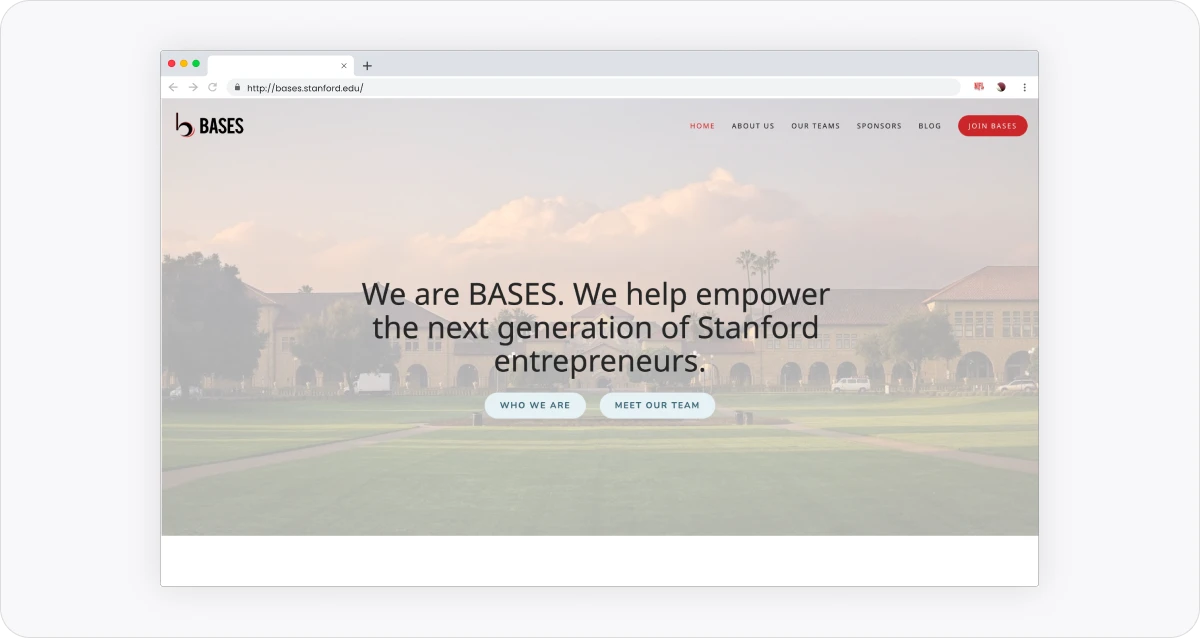
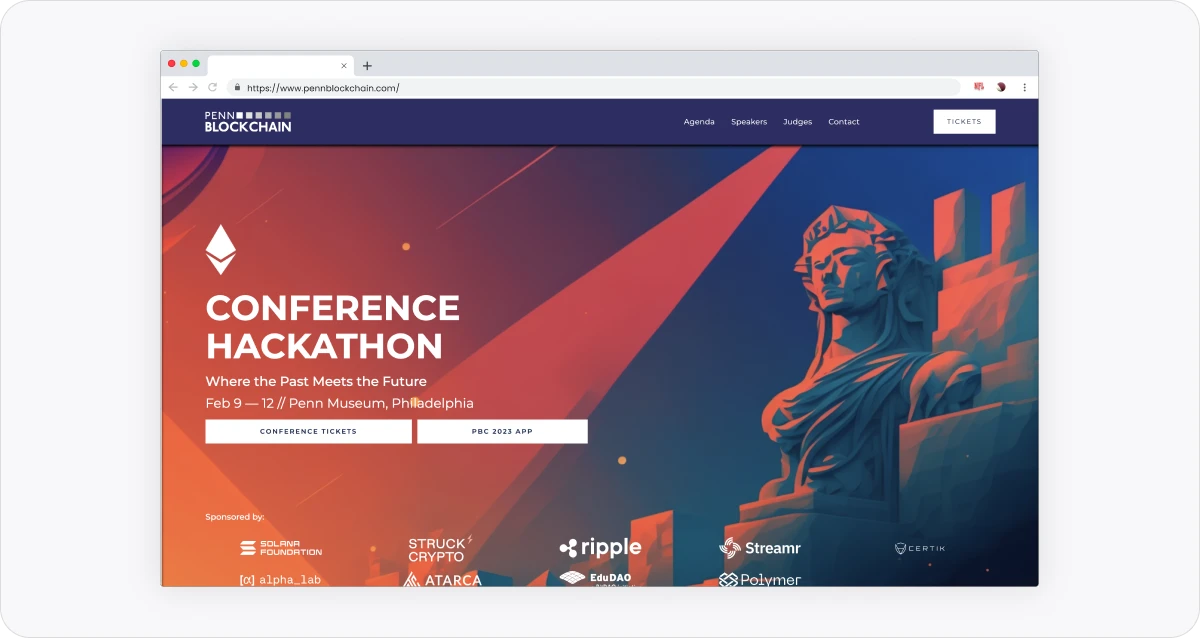
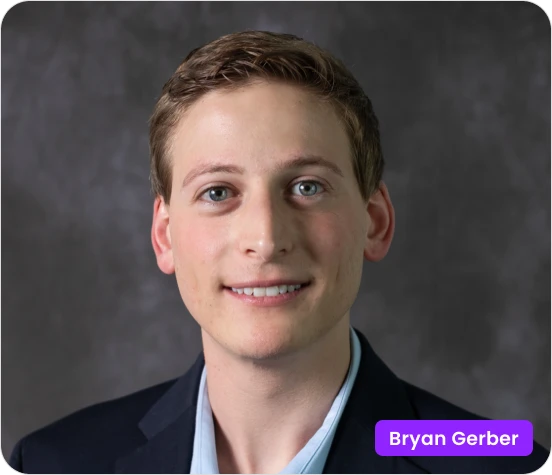
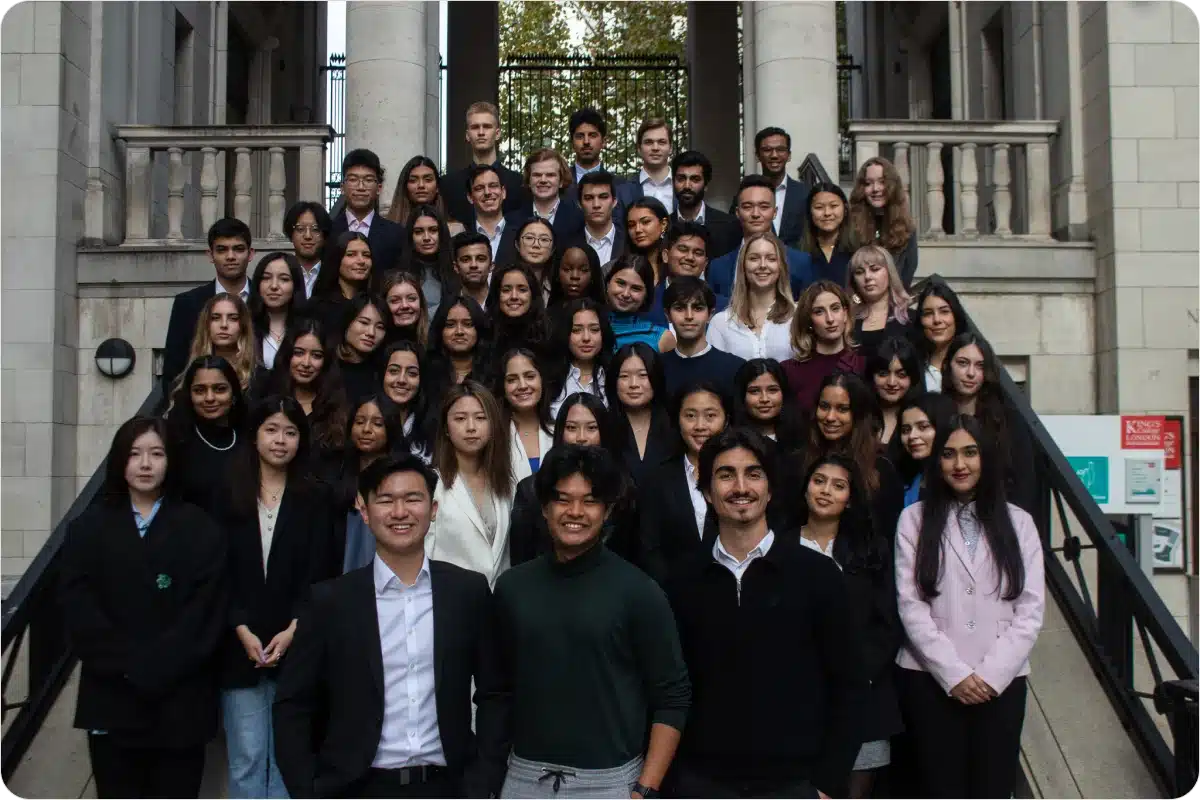
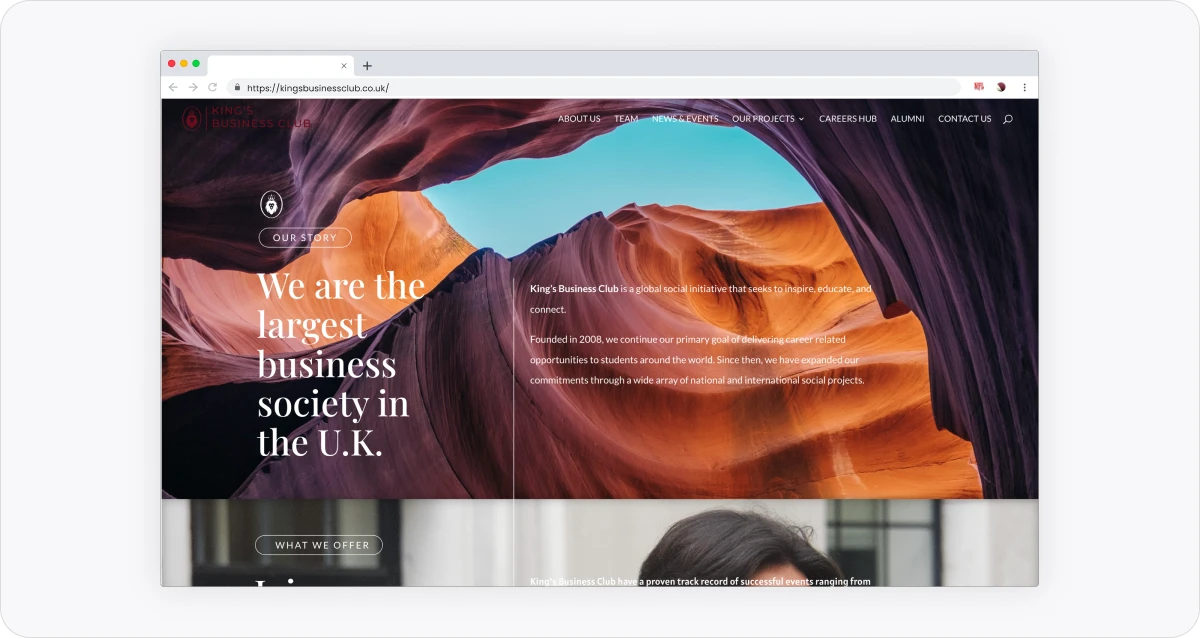


Generation Z college and university students have an impressive track record of running virtual and in-person events. Gen Z are “Social Natives” who successfully pushed digital transformation as the COVID-19 pandemic unfolded. Their success with virtual events inspired us to share this post: 60 Awesome University Virtual Online Event Ideas For College Students.
At Arena, we saw explosive product growth for student groups as all-virtual environments – including live chat – became indispensable.
Now, 3 years later, we wanted to check in with student leaders to see which digital trends and tools are still being used to manage group events today.
How Stanford, Penn & Caltech Students Run Virtual Events
We interviewed five student event organizers in the USA and UK to discover best practices so that you can run better events.
These stories will be most relevant to people running events aimed at the Generation Z (born 1997 to 2013) cohort. Yet there are also important lessons to be learned here for other groups building communities around career goals, technology, and other subjects. Let’s kick off with Stanford.
Stanford BASES (Business Association of Stanford Entrepreneurial Students) is a long-established college group that brings together students, alumni, and industry leaders interested in technology and startups. Past speakers at the organization’s events include leaders from Fusion Fund, Khosla Ventures, and LinkedIn.

Stanford BASES offers a variety of events, including sponsored events (1-2 per month) and other types of events. The Stanford organization typically attracts 20 to 40 participants per event, though some draw even larger crowds.
To find out what it’s like to run so many student events, we contacted Steven Pu, director of business development for the organization, for his insights.
“Fireside chats are one of our most popular event types. These 60-minute events usually involve 30-40 minutes of a panel discussion or a keynote. The remaining time is dedicated to question-and-answer interaction with attendees,” Pu explained.
Running digital events brings some challenges. “It is sometimes a struggle to make Zoom events engaging and interactive. In an event with 30 people, it’s common for only five people to have their video camera on,” Pu shared. In addition, the pandemic years forced many organizations to switch to digital events, and some people have become tired of these, and many students currently prefer in-person events.
Stanford BASES relies on a few essential tools to stay organized. “The key technology and tools we use to run events include Zoom, an email, and occasionally iMessage. Stanford provides the Zoom account and email list,” Pu shared.
On the East Coast, Penn Blockchain has quickly become one of the most successful student groups focused on blockchain technology and cryptocurrency. The organization also offers several types of events, including a large annual event. To discover more about Penn Blockchain’s event strategies, we sat down with Richard Ou, one of the group’s organizers.

“Penn has a very entrepreneurial culture which helps to make it easier to launch and grow groups like Penn Blockchain,” Ou explained. Penn Blockchain is a larger student organization with different units dedicated to research, investment, and technology. These various departments make it easier for students to find an opportunity to contribute and learn.
“We’ve used multiple tools to organize our events. Initially, we used Telegram for the organization because many people in the blockchain community already use Telegram. Our community didn’t like using Telegram to engage in larger group discussions.
Even though Penn Blockchain has experienced organizing a large annual event with more than one hundred speakers, numbers aren’t everything. “It’s easy to be misled by focusing on the number of attendees. Larger attendee numbers may mean there is a reduced chance of connections. The true goal is to benefit the university community and drive opportunities for students.”

The California Institute of Technology (Caltech) is home to many researchers, technologists, and engineers advancing technology. The Caltech Entrepreneurship Club is a powerful way to bring together students interested in the challenge of starting and running companies. We spoke with Bryan Gerber, who is studying for a Ph.D. in genetic engineering and is a club leader, to find out how they engage students.
“We host several types of events for our community, including a fireside chat, panel discussions, and speaker events. We’ve found that 60-minute duration is the sweet spot and typically have between 30 to 50 people in attendance,” Gerber commented.
Recently, the Club organized a Biotech Startup panel with a panel of accomplished professionals and approximately 50 attendees.
- Amanda Cashin, Global Head Illumina Accelerator
- Ben Wang, Co-Founder Chimera Bioengineering (CAR-T cellular engineering)
- Tatyana Dobreva, Co-Founder ImYoo Inc. (Single cell RNA sequencing immune cells)
- Jerry Chen, Founder HubSeq (Sequencing data computational pipeline)
“We use several tools to run our events, including Google Forms, Zoom, and the Caltech email listserv. For internal organizations, we use Slack. I have seen some people using WhatsApp and Messenger – these apps don’t seem a good fit for our needs,” he added.
Bryan also shared a few best practices to maximize audience engagement in events.
Use Calendar Invitations
Sending a calendar invitation to registered attendees is an excellent way to lift attendance. The Caltech Entrepreneurship Club has found that calendar invites help to push attendee show-up rates to 33% to 50% of those who register.
Invite The Audience To Submit Questions
On the event sign-up form, the Club asks people to submit questions for the guest speaker. This tactic makes for better events in two ways. First, it directly connects the attendee’s interest to the event. Second, soliciting attendee questions in advance eases the burden on event organizers to come up with questions.
Event Scheduling Best Practices
The Caltech Entrepreneurship Club has found two weekdays to result in the best attendance: 12 pm to 1 pm and 4 pm to 5 pm. These are times of the day when many students welcome a break and the chance to interact with other people.
Build A Large Pipeline of Staff
Running influential events takes care and planning. “It’s important to get many people interested at the start. Over time, we find out which people can run events and use our process,” Gerber explained. Generally, it is easier to get people started with hosting events.
This best practice applies to other settings. You might start with one or two people responsible for planning and running events. Recruiting additional staff over time is also wise because it allows you to keep events running smoothly if unexpected events affect your primary team.

King’s College, based in London, is one of the UK’s top 10 universities. The King’s College Business Club has been active in helping students discover business opportunities and network for years through its events. Michael Tye, president of the Kings College Business Club, shared a few best event best practices with us.

Solve A Problem For Your Audience
One of the club’s most successful events was a CV/cover letter workshop. The event featured guest speakers from several management consulting firms, including Accenture, Deloitte, Strategy& and EY. The event drew over 200 virtual attendees. “The feedback received was fantastic,” Tye commented.
Many Generation Z university students have their eyes on career opportunities, so the workshop attracted considerable interest. Consider applying a similar event format to help your attendees solve a problem. For example, a SaaS company might run a workshop with expertise provided by third-party partners.
Offer Small Group Experiences
Getting lost in the crowd is a significant risk when attending a larger event. Fortunately, there is a way to address this problem: breakout rooms proactively. “I would recommend taking advantage of breakout rooms to create a more interactive session in smaller groups,” Tye added.
Some online event platforms support breakout rooms directly. If your platform doesn’t offer that capability, the alternative is offering smaller group experiences. For example, organize a live chat session limited to 10-15 people and share it as a private invitation.
Boost Engagement With Impressive Guest Speakers
The right guest speaker can play a major role in driving higher engagement. The Kings Business Club has brought in professionals from consulting firms and senior executives from J.P. Morgan. The club has also had good results inviting startup leaders.
Look for experts and influencers your audience respects to grow your attendance and engagement. By the way, you don’t have to create the expert guest list alone. You can also ask your audience for guest suggestions. If you can meet those requests, your audience will love you!
For our final profile, we decided to explore mental health. Why? Many people in Generation Z face significant mental health struggles.

The American Psychological Association (APA) reported that Gen Z is likelier than other generations to report their mental health as fair or poor. Significant stressors for Gen Z include mass shootings, climate change, and sexual assessment, according to APA research.
Shreyaa Venkat and Esha Venkat founded a 501 C3 nonprofit organization called NEST4US. The organization has brought together over 5,000 volunteers to deliver events and services to participants in more than 30 countries.

The organization recently hosted a mental health workshop for students. We asked Shreyaa Venkat to share her thoughts on running influential virtual events for students.
Leverage A Variety of Digital Tools
“Zoom has been our primary platform due to its routine exposure among our target population—youth— especially with the surge in utilization during the COVID-19 pandemic,” Shreyaa Venkat shared.
While Zoom has been important, Vankat also shared that social media platforms like Facebook, Instagram, TikTok, and LinkedIn have proven vital for running the group.
Supporting Online Community Growth
Getting to know somebody you only interact with through a screen can be challenging.
Fortunately, that challenge can be overcome with proper planning. “We always make sure to incorporate ice-breaker activities, insightful discussions, Q&A sessions, interactive games, and team-building exercises throughout every one of our events,” Shreyaa Venkat commented.
Use A Variety of Digital Event Sizes and Formats
There are many types of online event formats that work for everyone. “Our online events include workshops, summits, conferences, social media live sessions, focus group discussions, web series, and professional development sessions,” Shreyaa Venkat explained.
Applying Gen Z Online Community Insights To Your Organization
Your organization may not focus exclusively on Gen Z, and you may have different resources. Despite those differences, there is much to be learned from Gen Z’s approach to virtual events.
Include Video In Your Online Events
All the people we spoke to mentioned using video tools like Zoom and Microsoft Teams. Look for ways to include live video in your online experience.
Invite Your Community Into The Event Process
Developing the initial vision for your event is a great start, but don’t feel like you have to think of everything. Ask your audience to contribute questions before, during and after the event. Taking the time to address as many questions as you can is a great way to build engagement.
Use Tools and Platforms Gen Z Likes
Hosting events on your website with live chat may be your goal. However, it’s important to consider the platforms that your Gen Z audience already likes and uses. For example, many crypto enthusiasts use Telegram. Your audience might like Instagram.
Find out where your audience hangs out online, build a presence and invite them back to your website, where you can use Arena Live Chat to engage them directly.
Focus on High Engagement, Not Just Numbers
Registering a thousand people for your event sounds impressive, but that’s just half the story. It can be more challenging to deeply engage larger audiences. Don’t hold back from holding small group style events like panel discussions and fireside chats with Gen Z. Holding a series of events capped at 25-50 people may be just the approach you need to create a foundation for long term engagement.
How To Build A Community On Your Website
Building an online community on your website is easy with Arena. Find out more about how to create a community experience right on your website.
